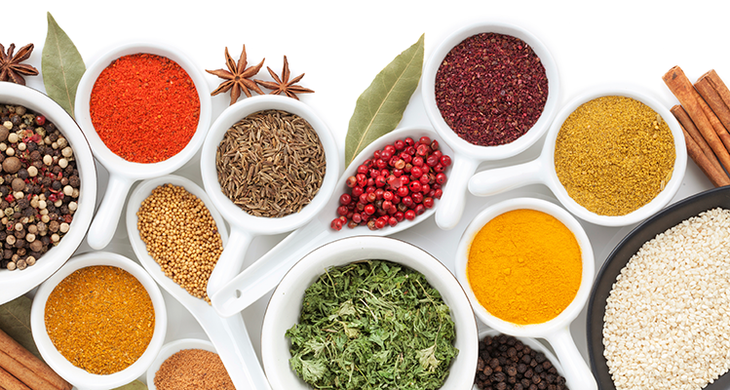Go Exotic With Your Spices
Infuse your recipes with flavors from around the world using Za'atar, Chinese Five Spice, and Shichimi Tōgarashi.
Get full access to Outside Learn, our online education hub featuring in-depth nutrition, fitness and adventure courses, and more than 2,000 instructional videos when you sign up for Outside+..
For millennia, various Eastern and European civilizations have explored the benefits of spices, for their health-promoting properties as well as their contributions to culinary pleasure. Around 4,500 years ago, Chinese emperors inscribed treatises on them, while Ayurvedic practitioners in India were extolling their efficacy in everyday medicine. And the ancient Greeks and Egyptians wrote extensively of their beneficial applications. Indeed, Christopher Columbus was searching for a route to India in order to obtain—yes, spices—when instead he discovered a land where the Native Americans had their own history of using a complex array of spices for culinary, health, and ceremonial purposes.

Particular mixes of herbs and spices developed in specific regions and cultures that reflected the dietary habits and medical attitudes of each. Today we can enjoy many of these combinations readymade, to enhance our dining pleasure as well as our daily well-being. These are a few of my favorites:
From the Far East: Chinese Five Spice
This aromatic blend is generally composed of cinnamon, cloves, star anise, fennel seed, and either Sichuan peppercorns (savory) or ginger (sweeter). Cinnamon is a warming spice, and in ayurvedic medicine is considered especially effective for strengthening and enhancing circulation. Ginger is an invigorating spice, particularly useful for assisting in proper digestion. Traditionally this mixture is used as a rub for meats and poultry, and in certain sauces; but it lends itself to a variety of inventive uses, from spicing the topping of a fruit crumble to sprinkling on a caramel flan to adding intrigue to a cheese omelet.
From the Middle East: Za‘atar
This Middle Eastern herb mix dates back to ancient Egypt; remnants of the primary ingredient were even found in King Tut’s tomb! The composition varies according to region, religion, and personal taste, but it usually involves wild thyme and/or European oregano, sesame seeds, and salt; often powdered sumac or sumac berries will be included. The thyme and oregano have antioxidant properties; the sesame seeds offer cholesterol-lowering benefits; and the sumac provides anti-inflammatory flavonoids. Za’atar is commonly consumed with pita and olive oil, or used with meats and fish. Sprinkle it on hummus, liven up roasted vegetables, or rub it on grilled chicken legs for an exotic change of pace.
From Japan: Shichimi Tōgarashi
Otherwise known as Japanese seven spice powder, this complex and assertive mix is newer than the others, probably dating from the 17th century. Essential ingredients are red chili pepper, dried orange peel, Sichuan pepper berries, ginger, black and white sesame seeds, and nori (seaweed). Packed with antioxidants across the board, this fragrant combination lends itself to so many uses, from turkey meatballs to seared-crust ahi tuna to miso and noodle soup.
Recipes:
Mix It Up!
Be an adventurous foodie explorer. Make your own version of these mixes from individual ingredients and incorporate other favorite herbs and spices-maybe even mix in some minced fresh herbs. Who knows? You might start a trend!
For hundreds of spice-themed recipes and tips for cooking with every spice imaginable, visit penzeys.com.